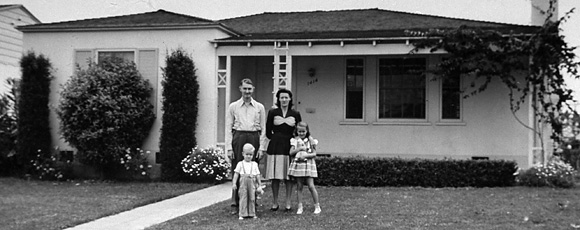
The perennial conviction that those who work hard and play by the rules will be rewarded with a more comfortable present and a stronger future for their children faces assault from just about every direction. That great enemy of democratic capitalism, economic inequality, is real and growing. The unemployment rate is dispiritingly high. The nation's long-term fiscal health is at risk, and the American political system, the engine of what Thomas Jefferson called "the world's best hope," shows no sign of reaching solutions commensurate with the problems of the day.
It has not always been this way. On Friday, May 1, 1931, James Truslow Adams, a popular historian, was putting the final touches on the preface to his latest book. It was a curious time in the life of the nation. Though the Crash of 1929 had signaled the beginning of the Great Depression that was to endure for years to come, there was also a spirit of progress, of possibility. On the day Adams was finishing his manuscript, President Herbert Hoover pressed a button in Washington to turn on the lights of the newly opened Empire State Building at 34th Street and Fifth Avenue, which, at 1,250 ft., was to be the tallest building in Manhattan until the construction of the World Trade Center four decades later.
High hopes amid hard times: the moment matched Adams' thesis in his book, The Epic of America, a history of the nation that was to popularize a term not yet in the general vernacular in those last years of the reigns of Harding, Coolidge and Hoover. Adams' subject, he wrote, was "that American dream of a better, richer, and happier life for all our citizens of every rank which is the greatest contribution we have as yet made to the thought and welfare of the world." It was not a new thing, this abiding belief that tomorrow would be better than today. "That dream or hope," Adams wrote, "has been present from the start."
What was new was the specific phrase Adams was using: the American Dream. From John Winthrop and the Puritan search for an earthly "city upon a hill" in the New World to Benjamin Franklin's "The Way to Wealth" aphorisms to Horatio Alger and the drama of the upwardly mobile, Adams' phrase had — and has — the deepest of roots in the American experience. For reasons ranging from geography to market capitalism to Jeffersonian ideas of liberty, we may well be the only people on the planet who tend to believe without irony that Thomas Paine was right when he declared that "we have it in our power to begin the world over again."
In fact, we don't have that power. No one does. History cannot be dismissed with a nod. But from generation to generation, Americans have indeed dreamed of steady personal and national progress. In the twilight of his life, Franklin D. Roosevelt, himself one of the most accomplished purveyors of hope and dreams in American history, recalled the words of his old Groton School rector, Endicott Peabody, who had told him, "Things in life will not always run smoothly. Sometimes we will be rising toward the heights — then all will seem to reverse itself and start downward. The great fact to remember is that the trend of civilization itself is forever upward, that a line drawn through the middle of the peaks and the valleys of the centuries always has an upward trend."
Roosevelt quoted that observation in his final Inaugural Address in the winter of 1945, and in the ensuing decades, American power and prosperity reached epic heights. The Peabody-Roosevelt gospel seemed to get it right: the world was not perfect, nor was it perfectible, but the story of America was at heart the story of doing well, of conquering disease and going to the stars and defending freedom and creating wealth. By and large, Americans of the postwar era were living those "better, richer, and happier" lives that Adams had written about in the shadow of the Crash.
Whoever rises to deliver the inaugural Address of 2013 will speak to a nation in which the American Dream is under profound economic and cultural pressure. This is perhaps best measured by the state of the middle class, about which we hear so much, and with good reason: roughly 90% of Americans self-identify as middle, upper-middle or lower-middle class (2% acknowledge being "upper class"; 6% say they are "lower class").
Definitions of class are hard to come by — so much so that the U.S. Department of Commerce, on behalf of Vice President Joe Biden's White House Task Force on the Middle Class, emphasized descriptive language rather than statistics, finding that "middle-class families are defined by their aspirations more than their income. [We assume] that middle-class families aspire to homeownership, a car, college education for their children, health and retirement security and occasional family vacations."
The government's verdict: "It is more difficult now than in the past for many people to achieve middle-class status because prices for certain key goods — health care, college and housing — have gone up faster than income." Median household income has also remained stagnant for more than a decade; when the figures are adjusted for inflation, Americans are making less now than they were when Bill Clinton was in the White House.
There, in brief, is the crisis of our time. The American Dream may be slipping away. We have overcome such challenges before. To recover the Dream requires knowing where it came from, how it lasted so long and why it matters so much. Emerson once remarked that there is properly no history, only biography. This is the biography of an idea, one that made America great. Whether that idea has much of a future is the question facing Americans now.